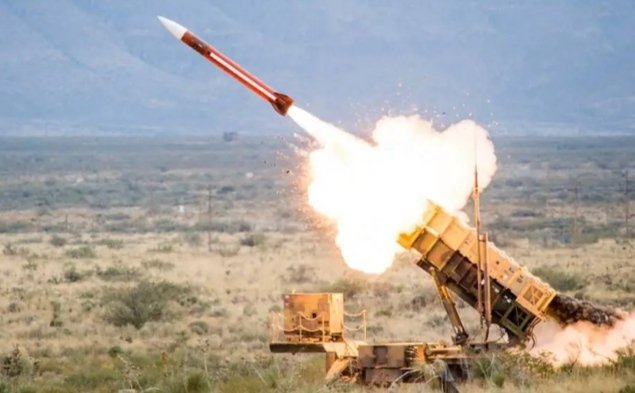
Raytheon and Sener sign strategical agreement for Patriot GEM-T EMCAS design and production
Raytheon and the Spanish engineering and technology group Sener have signed a strategic agreement for the Patriot GEM-T EMCAS design and production to meet the needs of Spain and NATO. Admiral Aniceto Rosique, current Spanish NAD, was present at the signing event.
 “This Memorandum of Understanding signifies Raytheon’s commitment to establish a strategic partner in Sener, whose collaboration will support the delivery of key air and missile defense capabilities to Spain and NATO,” said Pete Bata, Vice President of Global Patriot programs for Raytheon, an RTX business. “And through this partnership, Sener has the opportunity to become part of the Global Patriot supply chain, supporting a network of customers who have chosen Patriot as the backbone of their air defense.”
“This Memorandum of Understanding signifies Raytheon’s commitment to establish a strategic partner in Sener, whose collaboration will support the delivery of key air and missile defense capabilities to Spain and NATO,” said Pete Bata, Vice President of Global Patriot programs for Raytheon, an RTX business. “And through this partnership, Sener has the opportunity to become part of the Global Patriot supply chain, supporting a network of customers who have chosen Patriot as the backbone of their air defense.”
Rafael Orbe, the Defense General Director at Sener, said: “This agreement reinforces Sener as an international Centre of Excellence for the design and manufacturing of Control and Actuation Systems (CAS) for missiles. It also presents an excellent opportunity to demonstrate the high level of the Spanish defense industry to our Army and our NATO allies. We at Sener are very proud of this opportunity and are fully aware of the responsibility we hold not only with the end-user but also with our supply chain and our partner, Raytheon”.
In Spain, the Patriot batteries are operated by the Regimiento de Artillería antiaérea 73.
Patriot variant: MIM-104D (PAC-2/GEM)
There were more upgrades to PAC-2 systems throughout the 1990s and into the 21st century, mostly centering on software. The PAC-2 missiles were modified significantly—four separate variants became known collectively as guidance enhanced missiles (GEM). The main upgrade to the original GEM missile was a new, faster proximity fuzed warhead. Tests had indicated that the fuze on the original PAC-2 missiles was detonating their warheads too late when engaging ballistic missiles with an extremely steep ingress, and as such it was necessary to shorten this fuze delay. The GEM missile was given a new “low noise” seeker head designed to reduce interference in front of the missile’s radar seeker, and a higher performance seeker designed to better detect low radar cross-section targets. The GEM was used extensively in Operation Iraqi Freedom (OIF), during which air defense was highly successful.
Patriot variant: MIM-104E (PAC-2/GEM+)
Just prior to OIF, it was decided to further upgrade the GEM and PAC-2 missiles. This upgrade program produced missiles known as the GEM-T and the GEM-C, the “T” designator referring to tactical ballistic missiles, and the “C” designator referring to cruise missiles. These missiles were both given a totally new nose section, which was designed specifically to be more effective against low-altitude, low-RCS targets like cruise missiles. The GEM-T was given a new fuze which was further optimized against ballistic missiles and a new low noise oscillator which increases the seeker’s sensitivity to low radar cross-section targets. The GEM-C is the upgraded version of the GEM, and the GEM-T is the upgraded version of the PAC-2. The GEM+ entered service in November 2002. In 2018, Raytheon upgraded the GEM-T guidance system with solid-state gallium nitride (GaN) transmitters.


